4 Nights / 5 Days

Cost for Airfare, Train fare, Insurance Premiums, Rafting Charges. Cost for service provided on a personal request.
Pick up from IXB /NJP and transfer to Phuntsholing (165 Kms / 04-05 Hrs) Refer point 1, 2 & 3 given above (MANDATORY WHILE TRAVELLING TO BHUTAN FOR INDIAN PASSPORT HOLDER) Pick up from Njp Railway Station / Bagdogra (IXB) Airport and transfer to Phuntsholing (165 Kms, 03 to 04 Hrs) Meet & Greet upon arrival at Phuntsholing (298Mts / 977Fts) - The Frontier town, it is a thriving commercial centre, situated directly at the base of Himalayan foothills. It is a fascinating place where different ethnic groups mingle prominently Indian, Bhutanese and Nepalese. Being the border town, Phuntsholing serves as the convenient entry/exit point for Bhutan and also the important link to visit the Indian state of West Bengal, Sikkim and Assam. Depending on your arrival time our escort will assist you in procurement of your permit to Bhutan. The permit issuance takes time depending on the rush one has to stand in queue for procurement of permit. In case the permit is not processed on the day of arrival then it can be issued next day before you start for next destination. Overnight at Hotel
After breakfast and after completing your Visa / Permit formalities assisted by our Bhutan representative who will assist you in boarding your vehicle for transfer to Thimphu (2320Mts / 7656Fts, 180 Kms / 06 to 07 Hrs) in case if your permit are not done on day of arrival. Thimphu is the capital town of Bhutan and the centre of government, religion and commerce, Thimphu is a unique city with unusual mixture of modern development alongside ancient traditions. Although not what one expects from a capital city, Thimphu is still a fitting and lively place. Home to civil servants, expatriates and monk body, Thimphu maintains a strong national character in its architectural style. On arrival in Thimphu, Check in to the hotel. Evening free at leisure. Over-night at Hotel.
After breakfast drive to Wangdi (Wangdiphodrang) (1350Mts / 4430Fts, 70 Kms / 03 to 3½ Hrs One way). Wangdi is the last town on the highway before entering Central Bhutan. The drive is over Dochu La pass (3080Mts / 10102Fts) which is very scenic with fascinating view of mountains of Bhutan. Stopping briefly here to take in the view and admire the Chorten, Mani wall, and Prayer flags which decorate the highest point on the road. If skies are clear, the following peaks can be seen from this Pass (Left to Right): Mt. Masagang (7,158Mts / 23478Fts), Mt. Tsendagang (6,960Mts / 22829Fts), Mt. Terigang (7,060Mts / 23157Fts), Mt. Jejegangphugang (7,158Mts / 23478Fts), Mt. Kangphugang (7,170Mts / 23518Fts), Mt. Zongphugang (7,060Mts / 23157Fts), a table mountain that dominates the isolated region of Lunana - Finally Mt.Gangkar Puensum (7,497Mts / 24590Fts), the highest peak in Bhutan. Later visit Punakha Dzong (Which is closed in Winter months when the monk body are in Punakha. All visits to Punakha Dzong & Monastery are limited till Courtyard only. All tourists visiting Dzongs and temples must be dressed appropriately. No half pant, sleeve less shirts, floaters, etc are allowed) - Built Strategically at the junction of Pho Chhu (Father) and Mo Chhu (Mother) rivers in 1637, by Shabdrung Ngawang Namgyal to serve as the religious and administrative centre of the region, Punakha Dzong has played an important role in Bhutan's history. Damaged by Four catastrophic fires and an earthquake, the Dzong has been fully restored by the present King. The Dzong is open for visitors during Punakha Festival and in summer months when the monk body moves to Thimphu. Chimi Lhakhang (All tourists visiting Dzongs and temples must be dressed appropriately. No half pant, sleeve less shirts, floaters, etc are allowed) - situated on a hillock in the centre of the valley, is dedicated to Lama Drukpa Kuenley, who in the late 15th century used humor, songs and outrageous behavior to dramatize his teachings and due to this also known as "Divine Madman". This temple is also known as the temple of fertility. It is widely believed that couples who do not have children and wanting one, if they pray at this temple, they are usually blessed with a child very soon. It is about 30 minute walk across field from the road to the temple. The trail leads across rice fields to the tiny settlement of Pana, meaning "field". It then follows a tiny stream downhill to Yoaka and across more fields before making a short climb to Chimi Lhakhang. Evening you drive back to Thimphu. Overnight at the Hotel.
THIMPHU - PARO
After breakfasts go for Thimphu sightseeing covering – Memorial Chorten - The Chorten was built in 1974 to honor the 3rd King of Bhutan, Jigme Dorji Wangchuck (1928–1972), is a prominent landmark in the city with its Golden Spires and Bells. In 2008, it underwent extensive renovation. It is popularly known as "the most visible religious landmark in Bhutan". Tashichho Dzong (All tourists visiting Dzongs and temples must be dressed appropriately. No half pant, sleeve less shirts, floaters, etc are allowed) – Also known as "Fortress of the Glorious Religion", Trachichho Dzong, Thimphu was initially built in 1641 and later rebuilt in its present form by King Jigme Dorji Wangchuk in 1965. The Dzong houses, Main Secretariat Building which houses the Throne room of His Majesty, the King of Bhutan. The National Assembly Hall is housed in a modern building on the other side of the river from the Dzong. During the warmer summer months, the monk body headed by His Holiness, the Je Khenpo, makes its home in the Dzong. Kuensel Phodrang (Buddha Point) - You can pay your obeisance and offer prayers to the Buddha, the Largest Statue in the country and then walk around and take a glimpse of the valley, Changangkha Lhakhang (Monastery) (All tourists visiting Dzongs and temples must be dressed appropriately. No half pant, sleeve less shirts, floaters, etc are allowed) - This popular fortress-like temple perched on a ridge above central Thimphu regularly hums with pilgrim activity. It was established in the 12th century on a site chosen by Lama Phajo Drukgom Shigpo, who came from Ralung in Tibet. Parents traditionally come here to get auspicious names for their newborns or blessings for their young children from the protector deity Tamdrin (to the left in the grilled inner sanctum, next to Chenresig). Don't leave without taking in the excellent view from the back Kora (Pilgrim path), with its lovely Black and Gold prayer wheels. Motithang Takin Preservation centre to see the rare "Takin" Which was declared by Royal Government of Bhutan as National Animal on 25th November 1985. Why Bhutan selected Takin as National Animal is associated with Bhutan Religious and Mythology, it was during the time Lama Drukpa Kuenley (1455 – 1529) the Divine Madman and Bhutan Favorite Saints known for his outrageous antic. One day his devotees were gathered to witness his magical power and they asked him to perform a miracle. However, the saint, in his usual unorthodox and outrageous way, demanded that he first be served a whole cow and a goat for lunch. Having devoured both and leaving only the bones, he stuck the Goat head on the bones of the Cow. To everyone amazement, upon a commanded uttered by Lama Drukpa Kuenley, the animal came to life, arose and ran to the meadow and then began to graze. The animal came to be known as “Dong Gyem Tsey” and can still be seen grazing in the mountain meadows of the Kingdom. In these centre you can see Takin, Barking Deer & Sambar Deer. Something just to see Takin one needs to walk around the enclosure. Then visit the new Drupthob Goemba / Zilukha Nunnery - Perched on a promontory, overlooking picturesque Trashichho Dzong and Golf course, it is the only nunnery in capital known as Zilukha Anim Dratsang, once belonged to the Drubthob (Realized one) Thang Thong Gyalpo often referred to as The King of the open field (In the early 15th century with his multiple talents he popularly became the Leonardo da Vinci of the Great Himalayas). You may interact here with some of the nuns who have devoted their life to spirituality and Buddhism. National library (Closed on Saturday, Sunday & National Holidays) – is a major scriptural repository and research facility dedicated to the preservation and promotion of the rich literary, cultural and religious heritage of Bhutan. The scripture and document collection held in our library and archives is a national treasure and a fundamental source for Bhutanese History, Religion, Medicine, Arts and Culture. Later visit the Indigenous hospital where traditional art of healing is still practiced, Institute for Zorig Chusum (Traditional Art & Craft School) (Closed on Saturday, Sunday & National Holidays & During Summer & Winter Vacations) - The art taught today in Bhutan was introduced by the Great Treasurer Discoverer Terton Pema Lingpa in the Fifteen century. These traditional Crafts represents hundreds of years of Knowledge and ability that has passed down the generation. Bhutan unique artistic traditions have played a vital role in mounding its distinct cultural heritage. This tradition is best reflected in the “Zorig Chusum” or Thirteen Crafts. Textiles Museum (Handicrafts Shops)(Closed on Saturday, Sunday & National Holidays) - A wide assortment of colourful, hand woven textiles and other craft products is available for purchase at the government-run Handicrafts Emporium and many smaller crafts shops around the town. Then visit Zangthopelri Lhakhang (All tourists visiting Dzongs and temples must be dressed appropriately. No half pant, sleeve less shirts, floaters, etc are allowed) - The present structure was built in 1960s and although lacking the charm of many of the older temples, Zangthopelri still possesses some impressive murals and art treasures and is worthy of a visit. The site of the temple was a former battle ground, and the temple was constructed there in order to pacify energies. Later transfer to Paro (2200Mts / 7656Fts, 65 Kms / 01½ to 02 Hrs). On arrival Paro, check in to the hotel. Overnight at Hotel.
After breakfast go for Paro Sightseeing covering Drukgyel Dzong - This Dzong has a delightful village nestling at its foot, was built in 1646 by Shabdrung Ngawang Namgyal to commemorate his victory over the Tibetan invaders. Historically and strategically this Dzong with stood all its glory and was featured in 1914 vide National Geographic magazine. The glory of Drukgyel Dzong remained even when it was destroyed by fire in 1951. On a clear day, one can see the commanding view of Mt Jhomolhari (7134Mts / 23400Fts) can be seen towering over the Dzong. The visit to Drukgyel Dzong ruins involves soft walking hence it is advice able that one goes with walking shoes. Dzong gives an excellent view of the foothills villages and its landscape. Then proceed to visit Ta Dzong (National Museum) (After September 2011 Earth quake, Ta Dzong (Paro Museum) had been closed and shifted to exhibition hall just above the museum. Now the present exhibition hall will be open throughout the week except on Weekends & Government holidays. All tourists visiting Dzongs and temples must be dressed appropriately. No half pant, sleeve less shirts, floaters, etc are allowed). - One time watch tower built to defend Rinpung Dozng during inter-valley wars of the 17th century, since 1967 Ta Dzong is serving as the National Museum of the country. It holds fascinating collection of art, relics, religious Thankha paintings and Bhutan's exquisite postage stamps. The museum circular shape augments its varied collection displayed over several floors. Rinpung Dzong (All tourists visiting Dzongs and temples must be dressed appropriately. No half pant, sleeve less shirts, floaters, etc are allowed) - Built in 1646 by Shabdrung Ngawang Namgyal, the First spiritual and temporal ruler of Bhutan, the Dzong houses the monastic body of Paro, the office of the Dzongda (district administrative head) and Thrimpon (judge) of Paro district. The approach to the Dzong is through a traditional covered bridge called Nemi Zam. A walk through the bridge, over a stone inlaid path, offers a good view of the architectural wonder of the Dzong as well as life around it. It is also the venue of Paro Tshechu, held once a year in the spring. Walk further down crossing the traditional bridge into Paro Town. Later visit Kyichu Lhakhang (All tourists visiting Dzongs and temples must be dressed appropriately. No half pant, sleeve less shirts, floaters, etc are allowed) - It is one of the oldest and most sacred shrines of the Kingdom dating back to 7th century (the other is Jambey Lhakhang in Bumthang). The Lhakhang complex is composed of two temples. The first temple was built by Tibetan King, Songtsen Gampo in the 7th century and in 1968, H.M. Ashi Kesang, the Queen Mother of Bhutan, built the second temple in original pattern, this is a popular monastery for wedding blessing among our travellers. Back to the hotel. Overnight at Hotel.
MANDATORY WHILE TRAVELLING TO BHUTAN FOR INDIAN PASSPORT HOLDER:
We are Dealing in Tour & Travels Services Read More...
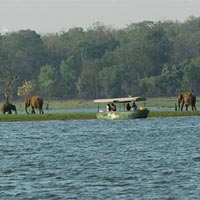 5D/4N
5D/4N
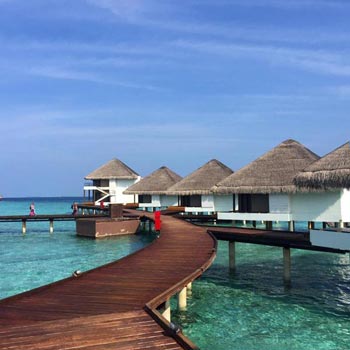 5D/4N
5D/4N
 3D/2N
3D/2N
 12D/11N
12D/11N
Highlights Of Europe 11N/12D Package
Amsterdam - Brussels - Paris - Heidelberg - Innsbruck - Florence - Rome - Disneylan..
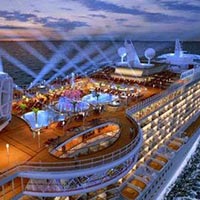 7D/6N
7D/6N
Singapore With Curise 6N/7D Package
Hyderabad - Singapore - Kallang - Woodlands - Bedok - NIGHT CRUISE - HYDERABAD
 6D/5N
6D/5N
 4D/3N
4D/3N
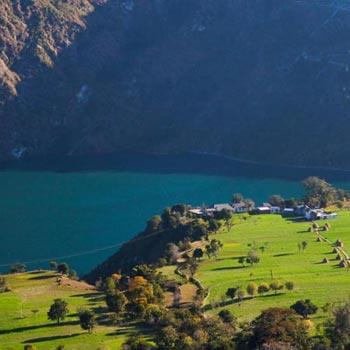 7D/6N
7D/6N
 7D/6N
7D/6N
 5D/4N
5D/4N
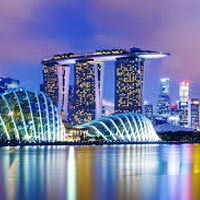 5D/4N
5D/4N
 5D/4N
5D/4N
 5D/4N
5D/4N
 5D/4N
5D/4N
 5D/4N
5D/4N
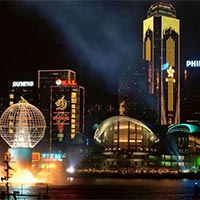 5D/4N
5D/4N
 5D/4N
5D/4N
 5D/4N
5D/4N
 5D/4N
5D/4N
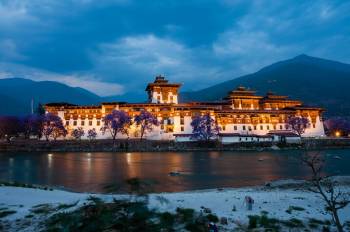 7D/6N
7D/6N
6 Nights/ 7 Days - Bhutan Happiness Tour
Punakha - Bumthang - Paro - Thimphu - Phobjik
 7D/6N
7D/6N
 7D/6N
7D/6N
 20D/19N
20D/19N
20 Days Land Package Country Tour Bhutan..
Punakha - Paro - Phuntsholing - Bagdogra - Bumthang - Mongar - Trashigang - Trongsa..
 4D/3N
4D/3N
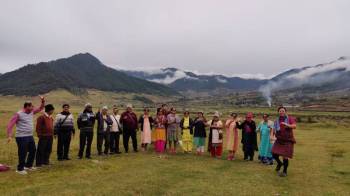 6D/5N
6D/5N
 7D/6N
7D/6N
 7D/6N
7D/6N
Rimso 7 Days 6 Nights Bountiful Tour fo..
Thimphu - Punakha - Paro - Phuentsholing